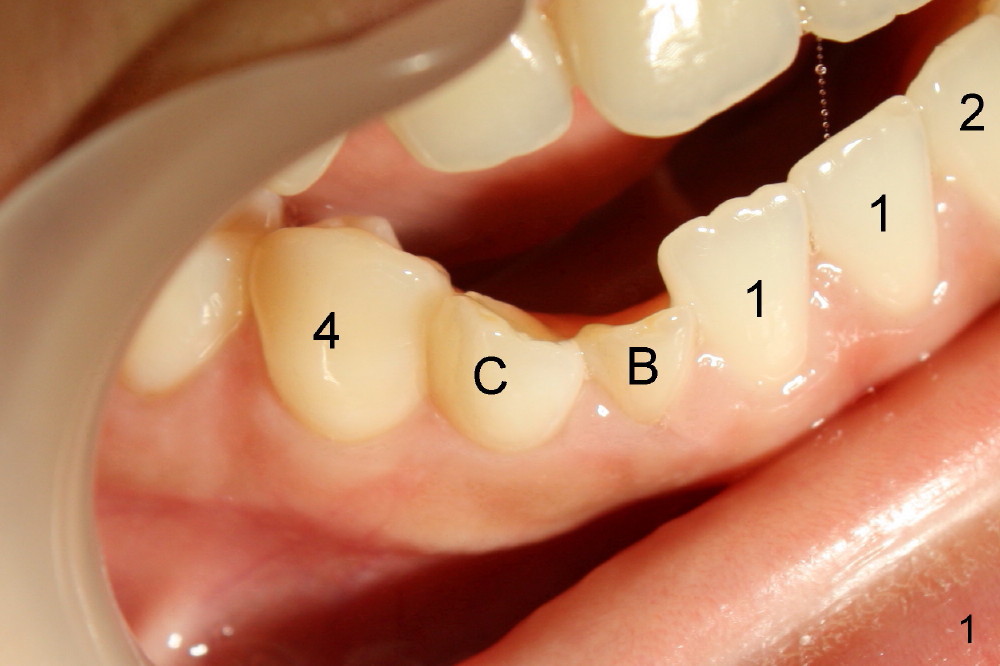
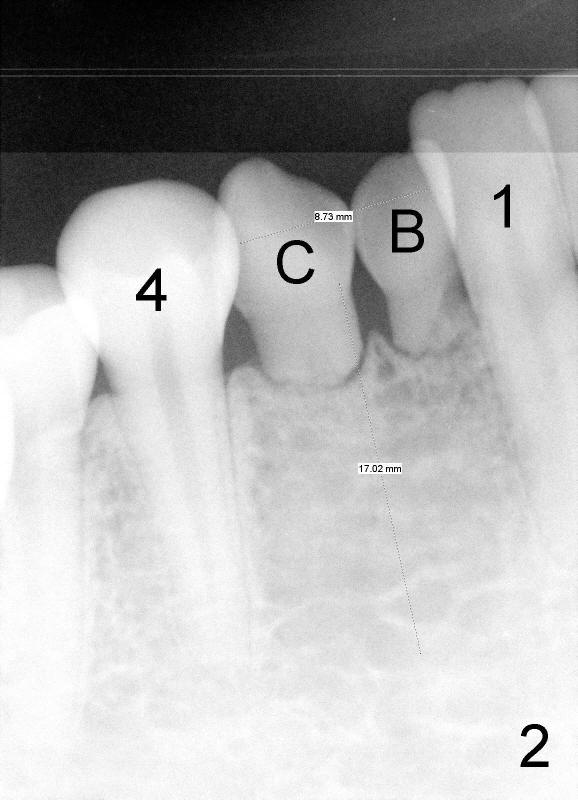
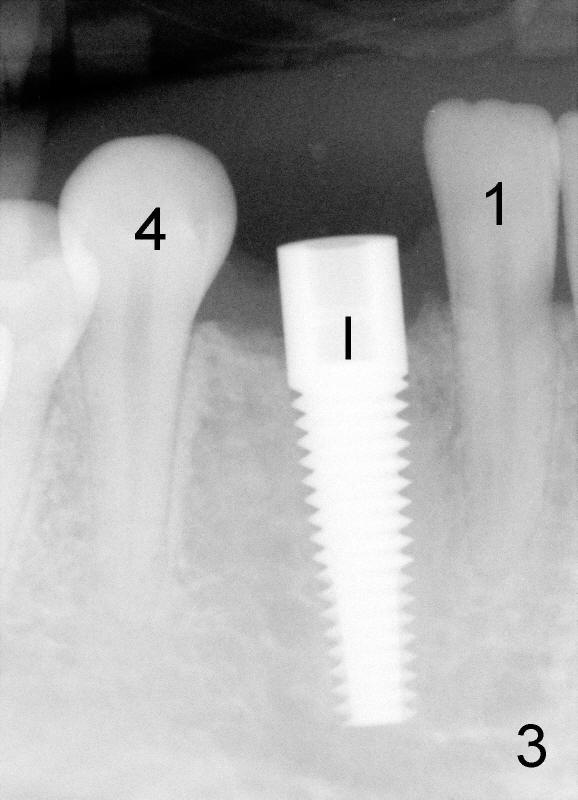
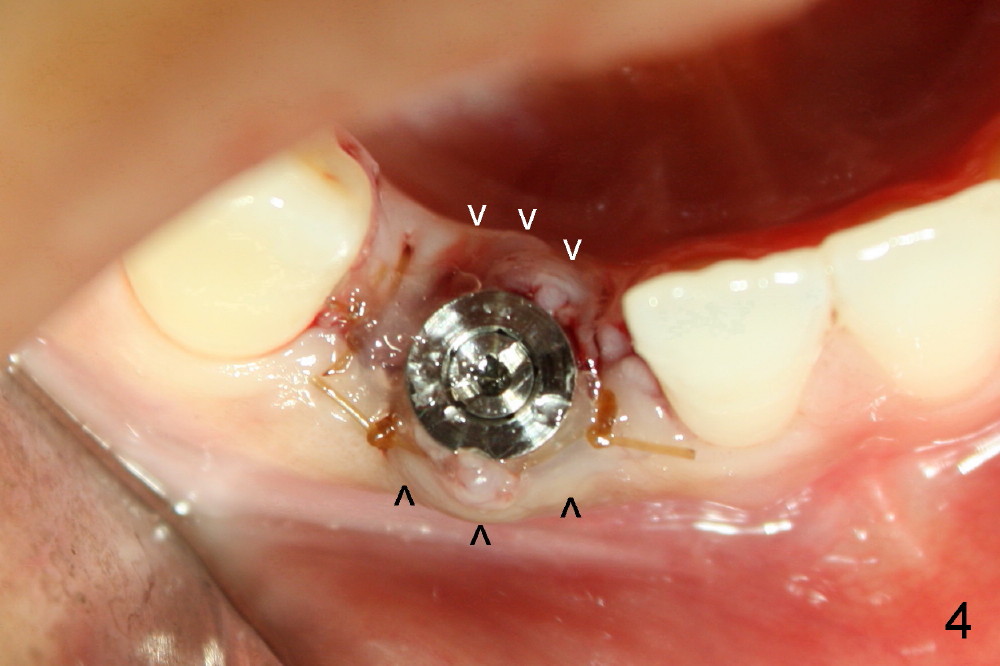
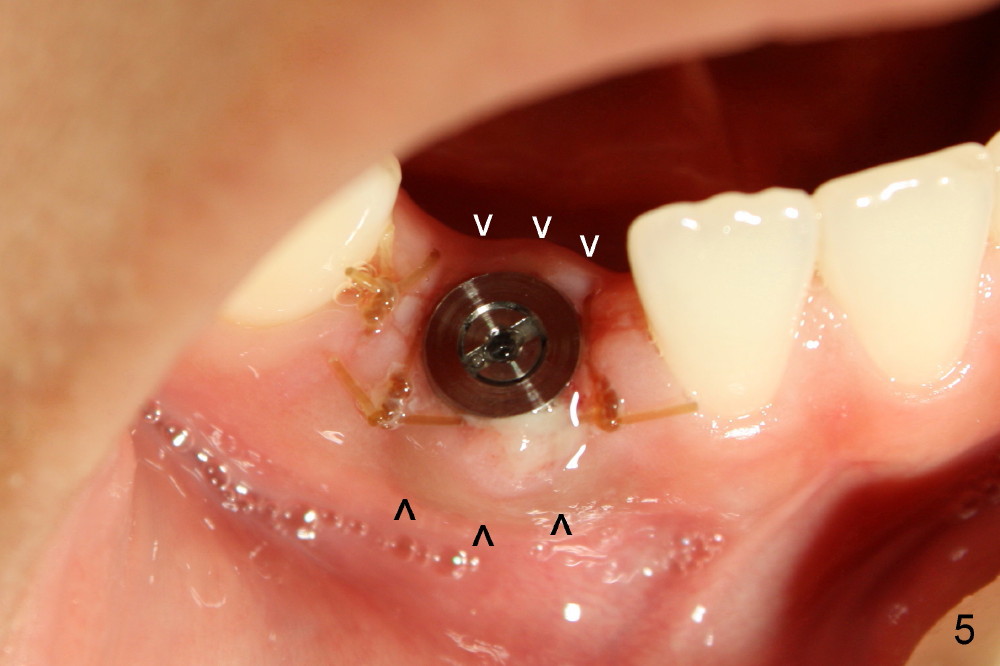
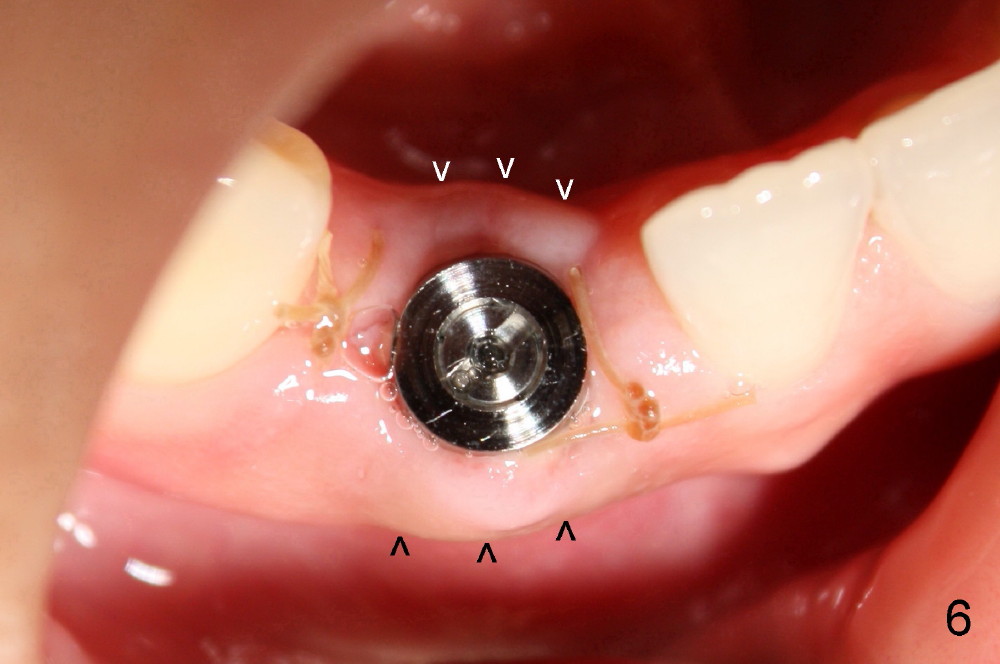
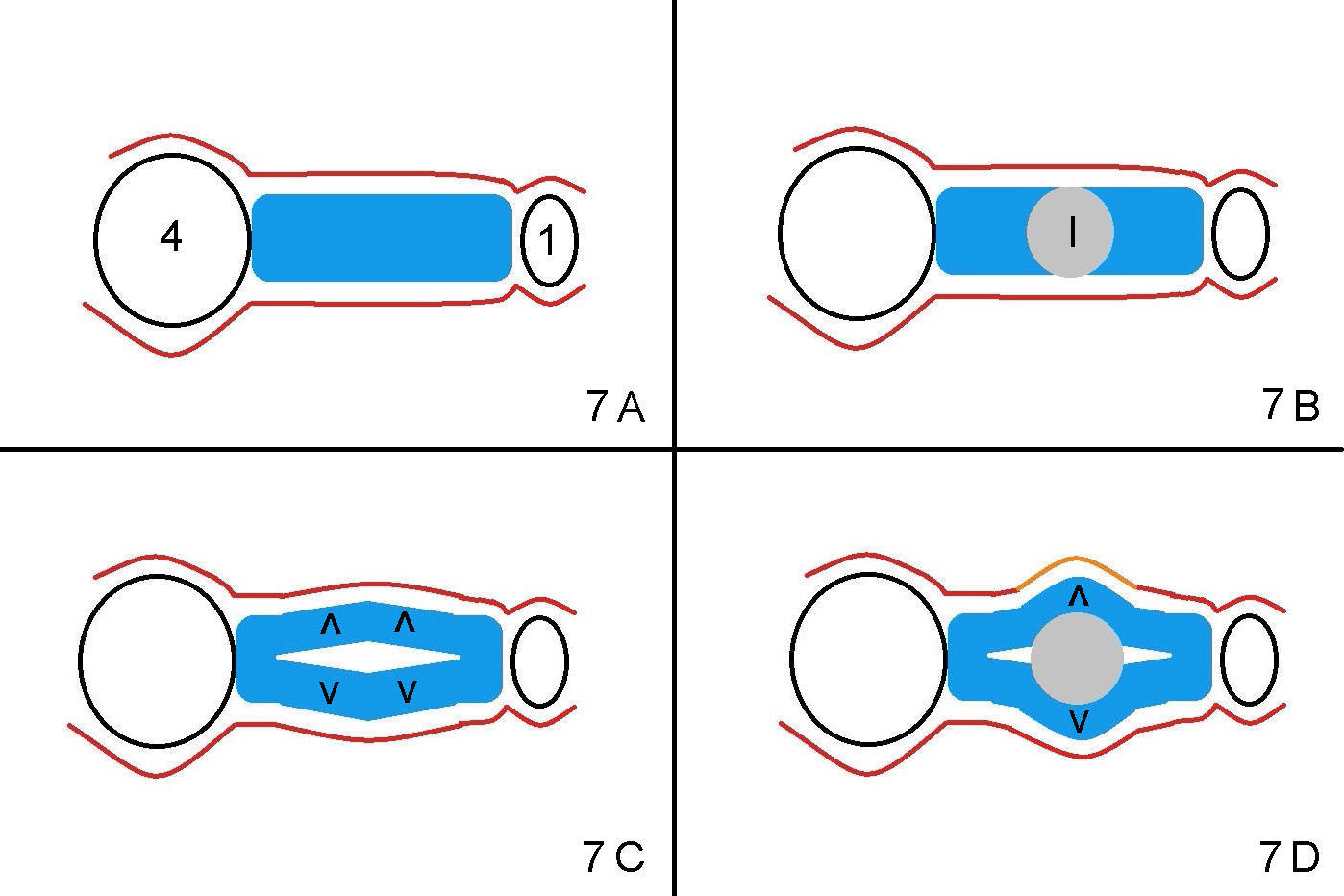
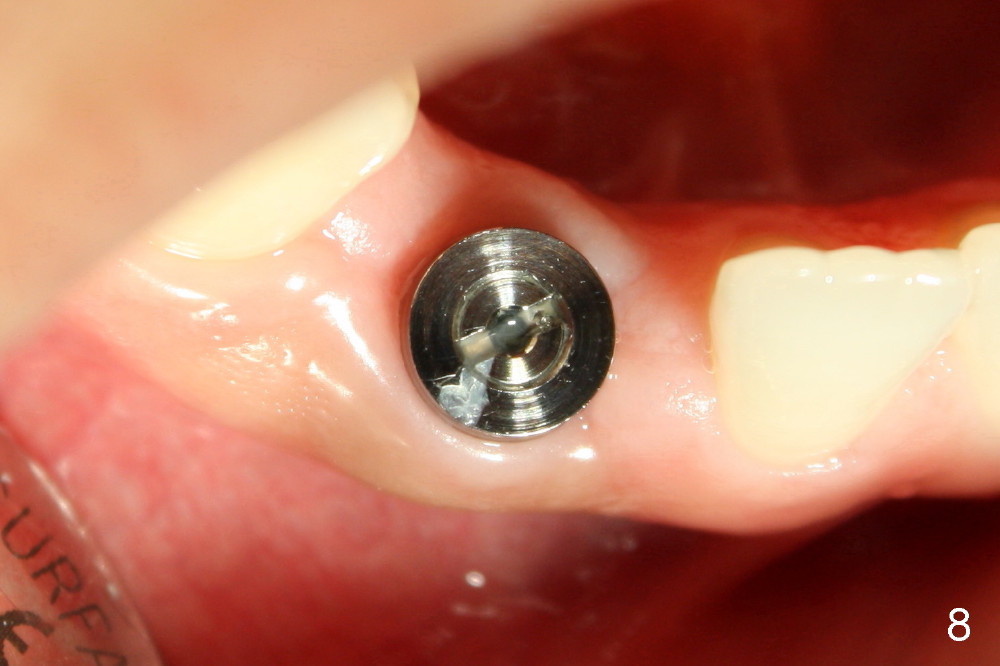
 |
 |
 |
 |
 |
|
 |
 |
|
 |
||
Missing Incisor and Canine
Ms. Zhang has two missing adult teeth: lateral incisor and canine. This condition is rare. The two corresponding baby teeth remain (Fig.1 B, C). But they may fall out at any time, because their roots are short (Fig.2). In Fig.1 and 2, 1 stands for central incisor, 2 lateral incisor and 4 1st premolar.
These two baby teeth are extracted and immediately replaced by one long and big implant (Fig. 3 I). The bone underneath the two baby teeth should be thin and soft, because the baby teeth are short (Fig.1: B, C). They can hardly touch the opposing teeth to chew. To place the long and big implant, the bone should be made thicker and stronger by using a special technique, called bone expansion and condensation as will be described below.
Fig.4 shows that bone and gums bulge (stick out, like a dome) next to the immediately-placed implant on both cheek (black >) and tongue (white >) sides. The bulging remains the same 2 and 6 days after surgery (Fig.5,6). How can this happen?
Fig.7A is a cross section through the root and surrounding bone of the 1st premolar (4) and the central incisor (1) and the thin bone in between (blue area). The red line stands for the overlying gums. Wherever the root and bone are bulging, they push the gums out. If an implant (Fig.7B: I) with a diameter as wide as the bone is placed, it should be not stable. To let an implant survive, it should be completely buried inside the bone. To do so, we use a set of bone chisels (from thin to thick) to gradually expand the bone (Fig. 7C: arrowheads) and also make the bone more compact. The overlying gums are also bulging, i.e., pushed out by expanding bone. Surprisingly, our bone has certain degree of flexibility under gentle and constant pressure. Then small to large round chisels are used to expand the middle portion of the bone and finally an implant is inserted (Fig.7D). The bone and gums are pushed outward further (arrowheads). With bone expansion and condensation, the implant is completely buried inside the bone. Probably the bone is harder. It lays a solid foundation for implant function when bone heals and a crown is made.
Under local anesthesia, bone expansion is pain free. The patient is doing well after surgery and the wound heals quickly (compare Fig.4-6). Two months later, the gums remain bulging and healthy around the implant (Fig.8).
Xin Wei, DDS, PhD, MS 1st edition 09/04/2012, last revision 11/05/2012